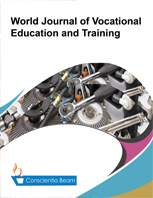The Van Hiele Model in Teaching Geometry
DOI:
https://doi.org/10.18488/119.v4i1.3087Abstract
The primary purpose of this study was to determine the effectiveness of the Van Hiele model in teaching Geometry to Grade 8 students as the basis for designing instructional materials using the Van Hiele model. This study used the quasi-experimental group design to assess whether there was a significant difference between the pretest performance to the posttest performance of the control and experimental groups. The results revealed that both groups had established a significant mean gain difference from Pretest to Posttest, although the experimental group, taught using the Van Hiele model, performed better than the control group. The teacher and the students encountered many challenges in each phase, but undeniably, the students enjoyed the activities. The majority of the students found that it is interesting to learn Geometry using the phases of the model. The instruction using the Van Hiele model is thus considered an effective way of teaching Geometry and an alternative teaching strategy to the traditional method. Therefore, this method is proper when teaching Geometry, especially to students with different learning needs, because of the presence of various geometric experiences.

